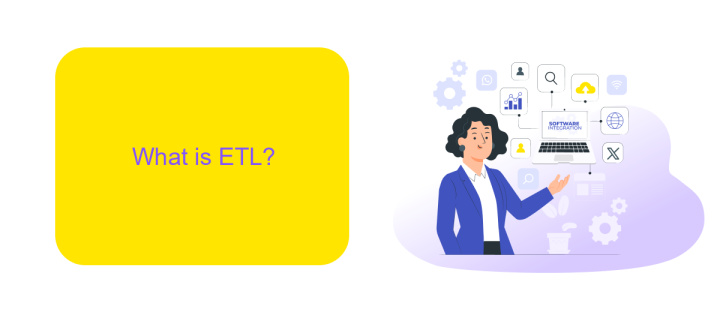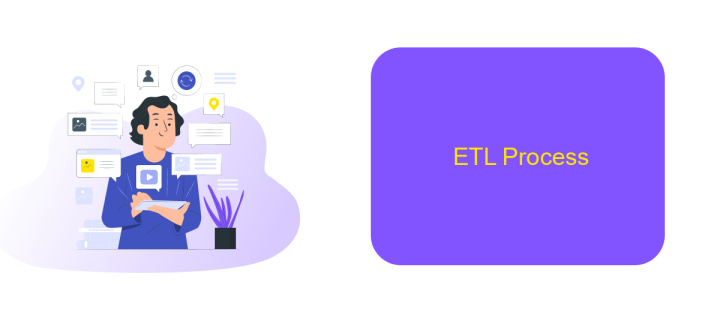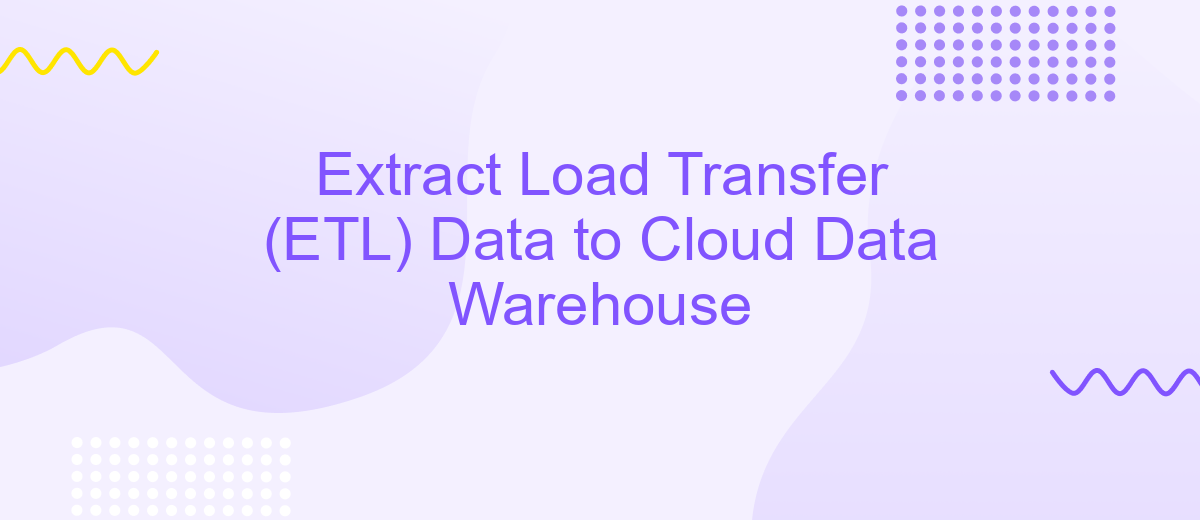Extract Load Transfer (ETL) Data to Cloud Data Warehouse
In today's data-driven world, businesses are increasingly turning to cloud data warehouses to store and analyze vast amounts of information. Extract, Load, Transfer (ETL) processes play a critical role in this transition, ensuring data is efficiently and accurately moved from various sources to the cloud. This article explores the key steps and best practices for implementing ETL processes in cloud environments.
Introduction
The process of Extract, Load, and Transfer (ETL) data to a cloud data warehouse is a critical component of modern data management strategies. ETL enables organizations to efficiently move data from various sources into a centralized repository, facilitating improved data analysis and decision-making. As businesses increasingly rely on cloud-based solutions, understanding the nuances of ETL in this context becomes essential.
- Extract: Gathering data from diverse sources such as databases, APIs, and flat files.
- Load: Importing the extracted data into the cloud data warehouse.
- Transfer: Ensuring the data is accurately transformed and ready for analysis.
Services like ApiX-Drive simplify the integration process by offering automated data workflows between different platforms. By leveraging such tools, businesses can streamline their ETL processes, reduce manual intervention, and ensure data consistency across their cloud infrastructure. This not only saves time but also enhances the reliability of the data being analyzed.
What is ETL?

ETL stands for Extract, Transform, Load, and it is a crucial process in data management and warehousing. The ETL process involves extracting data from various sources, transforming it into a suitable format, and loading it into a data warehouse or another target system. This allows organizations to consolidate data from disparate sources, ensuring it is clean, consistent, and ready for analysis. ETL is essential for making informed business decisions, as it provides a reliable and unified view of data.
The extraction phase involves collecting data from different sources such as databases, APIs, and flat files. Transformation involves cleaning, enriching, and structuring the data to meet specific requirements. Finally, the loading phase transfers the transformed data into a target system, such as a cloud data warehouse. Tools like ApiX-Drive can simplify this process by automating data integration from various sources, ensuring that your data pipeline is efficient and reliable. With ApiX-Drive, businesses can streamline their ETL processes, reducing manual effort and minimizing errors.
Benefits of ETL

Implementing an ETL (Extract, Transform, Load) process offers a multitude of benefits for businesses looking to efficiently manage and utilize their data. By automating the data integration process, ETL ensures that data from various sources is consistently and accurately consolidated into a centralized data warehouse.
- Improved Data Quality: ETL processes include data cleansing and validation steps, ensuring that only accurate and relevant data is loaded into the data warehouse.
- Enhanced Decision Making: By providing a unified view of data, ETL enables better analysis and reporting, leading to more informed business decisions.
- Time and Cost Efficiency: Automating data integration reduces the time and resources required for manual data handling, allowing teams to focus on more strategic tasks.
- Scalability: ETL processes can be easily scaled to handle increasing volumes of data as the business grows.
- Integration with Cloud Services: Tools like ApiX-Drive facilitate seamless integration and automation of data flows from various sources to cloud data warehouses, enhancing overall efficiency.
In summary, ETL processes play a crucial role in modern data management strategies by ensuring data accuracy, improving decision-making capabilities, and offering scalable solutions for growing data needs. Utilizing services like ApiX-Drive can further streamline the integration process, making it easier to manage and automate data workflows.
ETL Process

The ETL process is a critical component in data management and analytics, enabling organizations to efficiently move and transform data from various sources into a centralized cloud data warehouse. The process begins with the extraction phase, where data is collected from multiple sources such as databases, APIs, and flat files. This data is then cleaned and transformed to ensure consistency and compatibility with the target data warehouse schema.
Transformation is a key step where raw data is converted into a structured format. This involves data cleansing, normalization, aggregation, and the application of business rules. Tools like ApiX-Drive can significantly streamline this process by providing pre-built connectors and automated workflows, reducing the need for manual coding and ensuring data accuracy.
- Extraction: Collecting data from various sources.
- Transformation: Cleaning and structuring the data.
- Loading: Inserting the transformed data into the cloud data warehouse.
The final phase, loading, involves transferring the transformed data into the cloud data warehouse. This step ensures that data is readily available for analysis and reporting. By leveraging services like ApiX-Drive, organizations can automate and optimize the entire ETL process, ensuring timely and accurate data integration.
- Automate the work of an online store or landing
- Empower through integration
- Don't spend money on programmers and integrators
- Save time by automating routine tasks
Conclusion
The process of extracting, loading, and transferring data to a cloud data warehouse is a critical step in modern data management. It ensures that businesses can leverage their data effectively, making it accessible for analysis and decision-making. By utilizing robust ETL tools and strategies, organizations can streamline their data workflows, reduce latency, and improve overall data quality. The cloud data warehouse provides scalability, flexibility, and cost-efficiency, making it an ideal solution for handling large volumes of data.
Integrating various data sources can be challenging, but services like ApiX-Drive simplify this process by offering seamless integration capabilities. ApiX-Drive allows businesses to connect multiple platforms without the need for extensive coding, ensuring smooth data flow across systems. This facilitates a more efficient ETL process, enabling quicker access to valuable insights. In conclusion, leveraging advanced ETL techniques and integration services like ApiX-Drive can significantly enhance an organization's data management strategy, driving better business outcomes.
FAQ
What is ETL and why is it important for a Cloud Data Warehouse?
What are the main challenges of ETL processes for Cloud Data Warehouses?
How can I automate the ETL process for my Cloud Data Warehouse?
What factors should I consider when selecting an ETL tool for my Cloud Data Warehouse?
How do I ensure data security during the ETL process to a Cloud Data Warehouse?
Time is the most valuable resource for business today. Almost half of it is wasted on routine tasks. Your employees are constantly forced to perform monotonous tasks that are difficult to classify as important and specialized. You can leave everything as it is by hiring additional employees, or you can automate most of the business processes using the ApiX-Drive online connector to get rid of unnecessary time and money expenses once and for all. The choice is yours!


